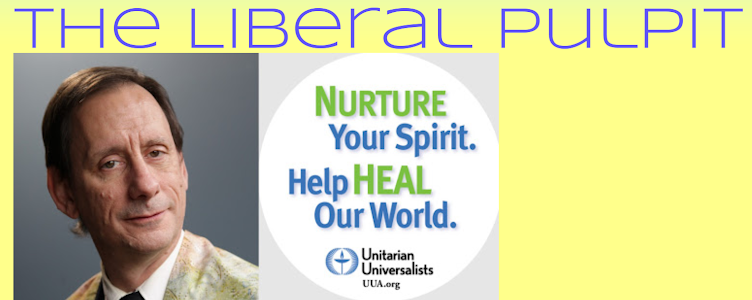On Being a UU Buddhist, part 2
I began divinity school at United Theological Seminary in Minneapolis, because, that year, LoraKim and I were living in Rochester, Minnesota where she was doing her ministerial internship. As per the procedure that was in place at that time, after the first year of seminary, I drove over to Chicago to be interviewed by the Midwest Regional Subcommittee on Candidacy. These regional subcommittees have since been discontinued. They were created to try to head off the problem of too many people who were just not cut out for ministry investing years of their life in seminary education, accumulating debt. The subcommittee’s job was to say, either, “Yes, we see a prospective minister here,” or “We’re concerned that that you’re pursuing a career path that’s not going to work out for you.”
As you can imagine, it’s kind of a nerve-wracking deal.
The intellectual strategy that served me just fine when I was orally defending my thesis was not what they wanted to see. At one point they asked me: “Do you have a spiritual practice?”
Before starting seminary, I had spent two years as the congregational facilitator and preacher for the Unitarian Universalist Fellowship of Clarksville, Tennessee. Before that, I'd served as a president of our Fellowship in Waco, Texas, as Vice President of our church in Charlottesville, Virginia and had worked as the church secretary for a year at our Nashville, Tennessee church. But did I have a spiritual practice?
I was a born-and-raised Unitarian Universalist. I had a Ph.D. I'd been a philosophy professor. I could debate about metaphysics, metaethics, metatheology, poststructuralism, postindustrialism, and postmodernism. If it was meta-, or post-, I was all over it. But did I have a spiritual practice?
Well, no, I didn't.
“Get a spiritual practice,” the committee told me. “And come back to see us again in a year.”
On the five-and-a-half-hour drive from Chicago back home to Rochester, it became clear to me what practice I would try, at least for starters.
I liked what the Buddhists said. Let me try practicing what the Buddhists practice. The idea of meditation seemed like a good one. The time had come, it seemed, actually do it.
I began the way I usually begin new things: I got a book. It told me about mindfulness, finding a posture for stillness, and what to do with my mind while being still. And what to do when my mind wandered off from doing what I had told it to do.
I started with fifteen minutes a day, and after a couple months was up to 30 minutes each morning of sitting meditation. I started going to weekly meditation group meetings and Vipassan (insight) meditation classes.
In 2002, LoraKim and I moved to El Paso, and I started exploring Zen. I had heard that there was a UU minister named James Ford who was also a Zen master. I wrote to Rev. Ford and asked his advice. He wrote back and said: “There are two times to visit many masters: at the beginning of your training, and at the end.” He listed some I could visit, and his strongest recommendation was for Ruben Habito, a Filipino former Jesuit priest teaching comparative religion at Perkins Theological School in Dallas. I visited with, and meditated with, and chanted with, and absorbed the dharma talks of Zen teachers in Las Cruces, and Tucson, and Albuquerque, and Austin, before finally going to see Ruben in Dallas. For the next 10 years, he was my Zen teacher.
Since 2001, I’ve been sitting daily, going to group meditation weekly, and going to intensive meditation retreats a few times a year. After a few years, I sewed a rakusu – a patchwork apron-like garment that symbolizes the traditional robes of Buddhist monastics – and went through a jukai ceremony in which I formally received the Buddhist precepts and was given a Dharma name: "Hotetsu." It’s basically a confirmation ritual. I was confirmed as a Zen Buddhist in 2007.
In the Buddha-Dharma, I hear recurrent echoes of the themes of the pragmatist philosophy I studied. Attachment to your picture of reality doesn’t help. Upaya (skillful means) does. Concepts are empty, yet useful within a context of a particular purpose. All things are impermanent, including the list of sentences that humans, at any given time, commend as ‘true.’ Things do not have essences or permanent, distinct identities, but are a continually shifting networks of relationships – and this includes the self. My favorite philosophy professor, Richard Rorty, taught about “radical contingency.” I discovered the Buddha also taught about this, calling it “interdependent co-origination.”
One difference, though, was that the pragmatists emphasized language and purpose. Buddhism emphasized nonlinguistic and nonpurposive presence. The path to this mindful presence is one step at a time. Language and purpose keep popping up – it’s how we were made. Notice and see through the linguistic description and the purpose it serves. Then the next one, then the next, then the next. Just keep at it. This is the path.
My parents raised me with one central value: know stuff. Now my spiritual practice is not knowing: opening myself to let each thing present itself afresh without burying it under the load of all those concepts I worked so long to acquire.
* * *
This is part 2 of 3 of "On Being a UU Buddhist"
See also
Part 1: A Path to Buddha
Part 3: The Prophets and the Buddha



No comments:
Post a Comment